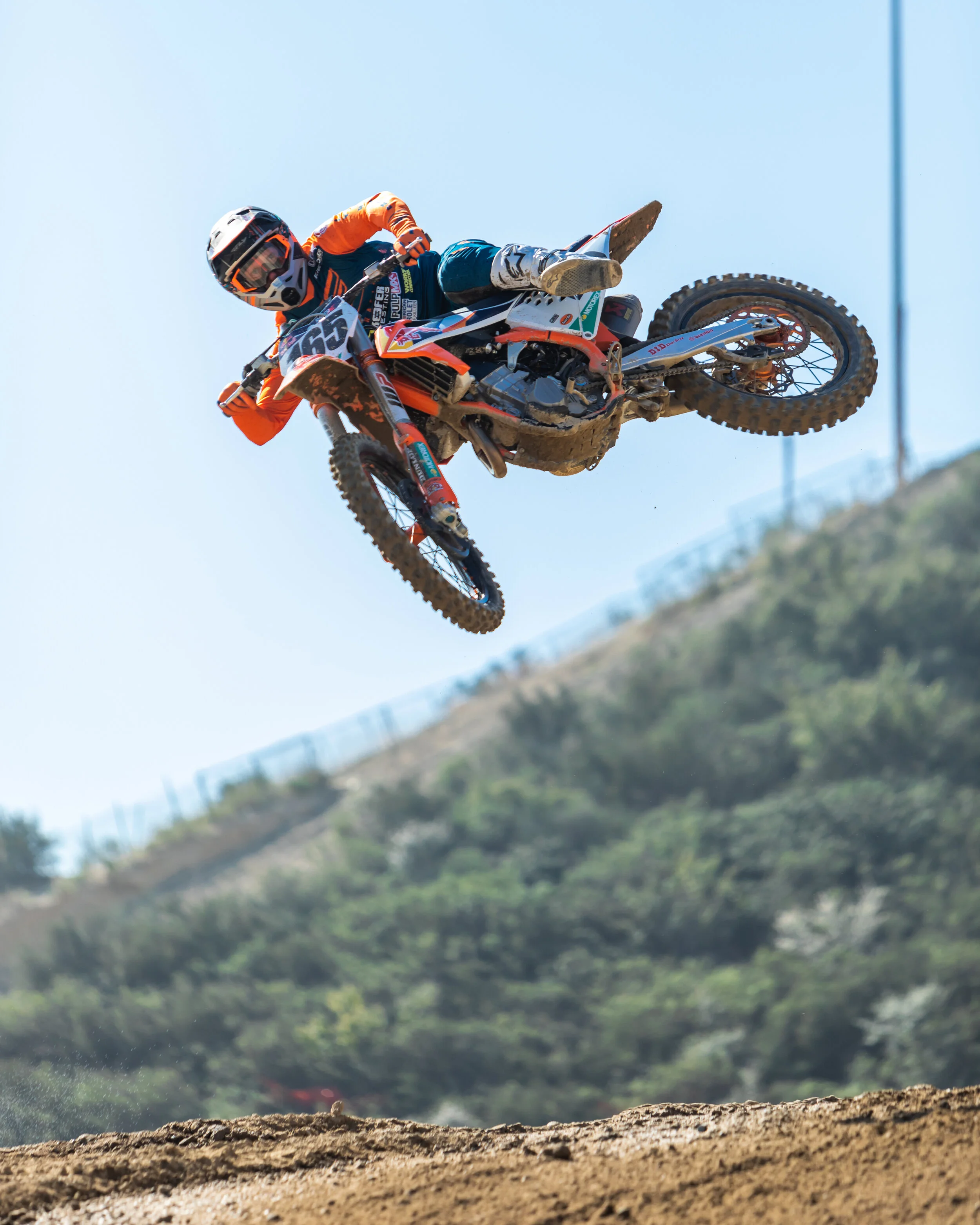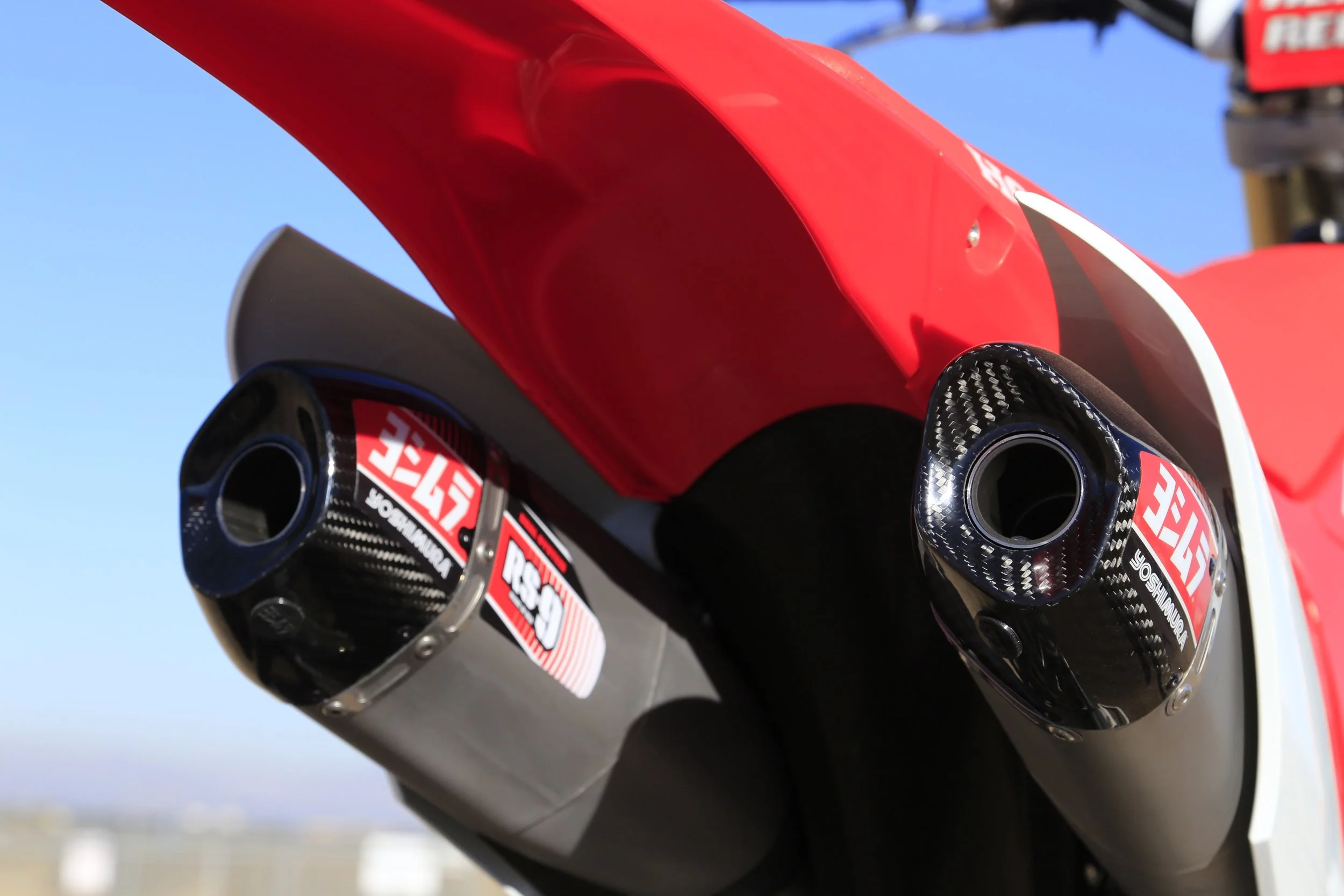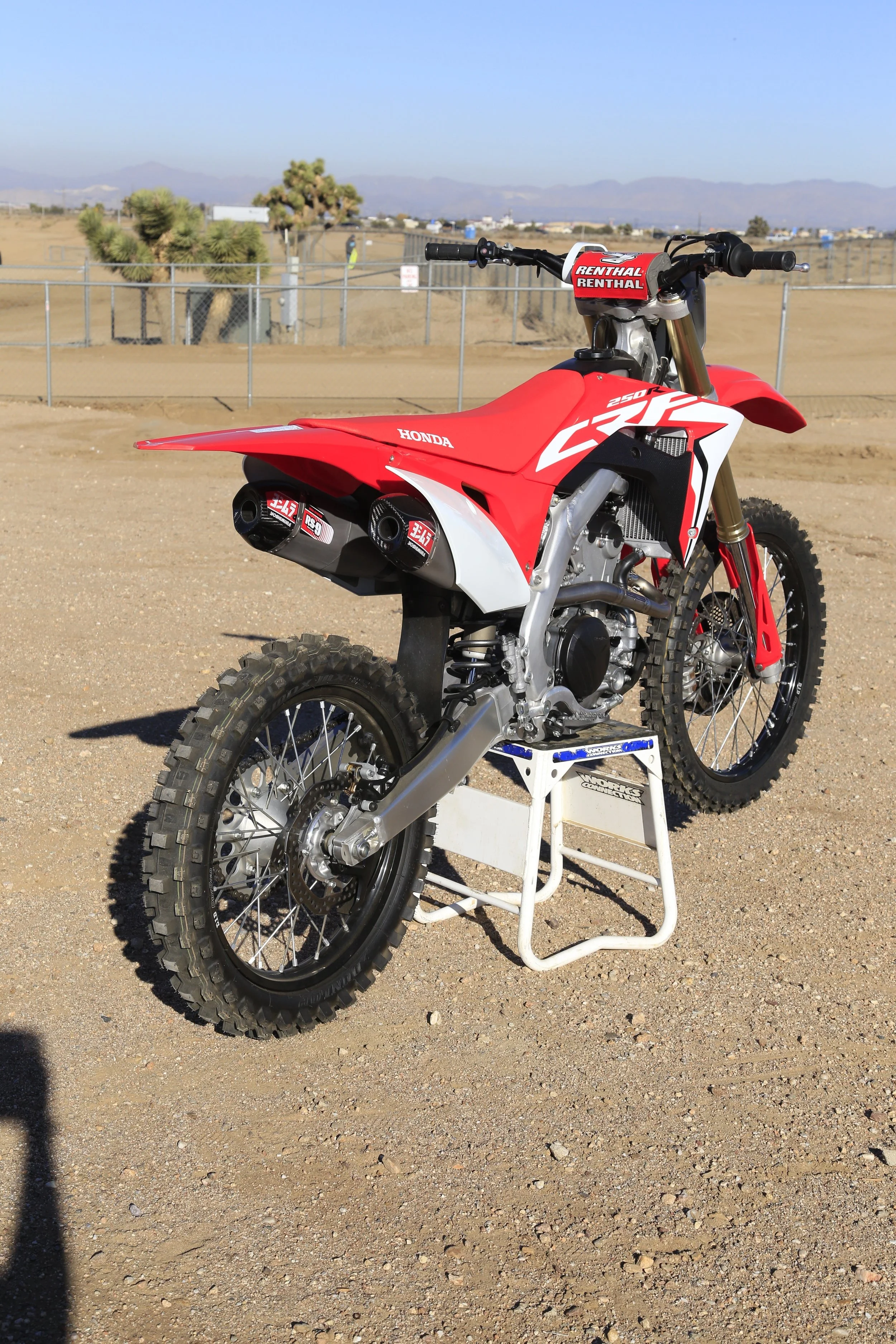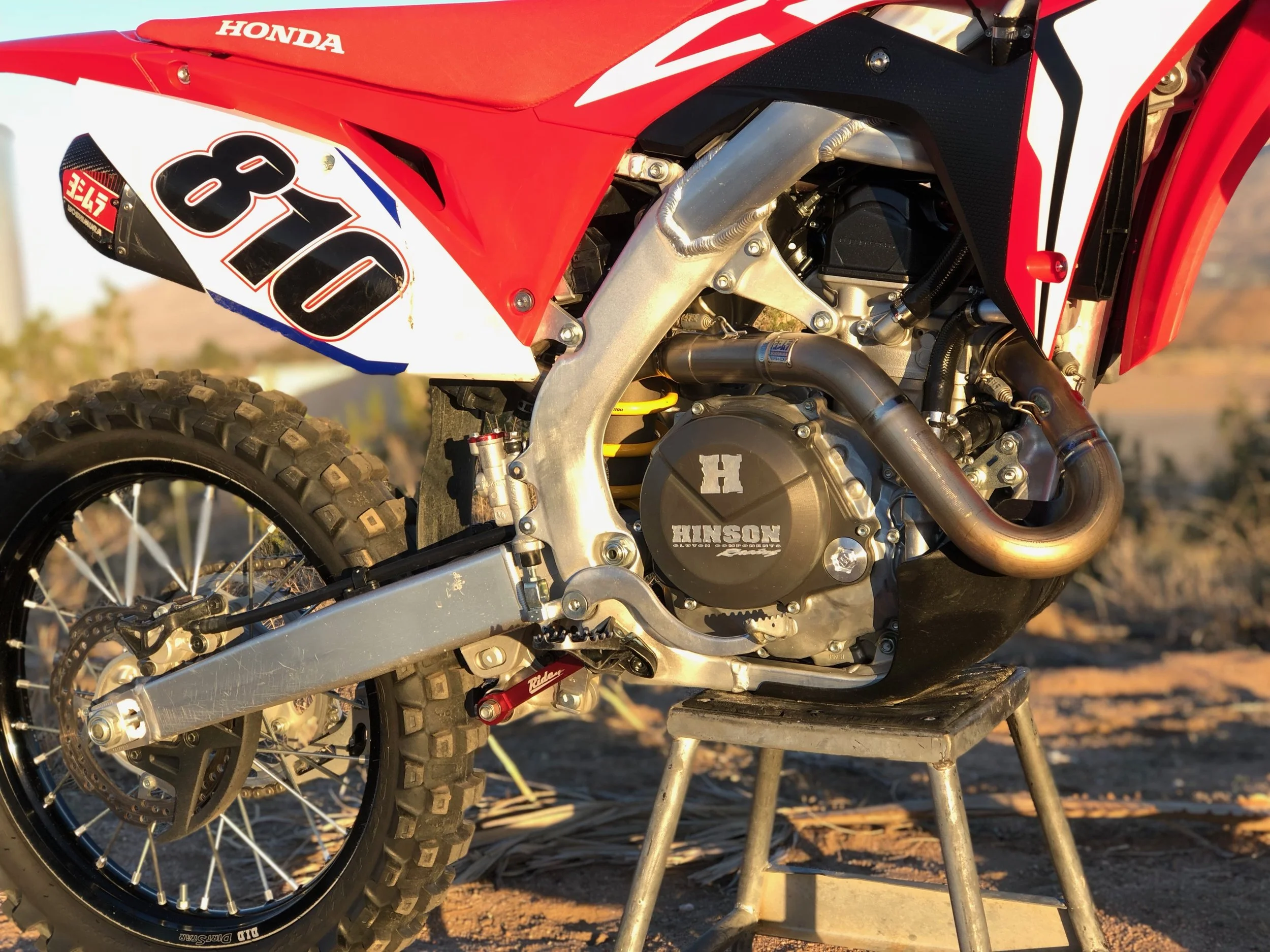Something that most riders (including me) may not see a lot of in the states is HGS exhaust systems. HGS is a Netherlands based company that has been making exhausts since the early 90s and are mostly popular among European club riders and of course many factory supported MXGP teams. I had the chance to try out an HGS exhaust with the Conical silencer on a 2021 KTM 250 SX-F supplied by Bud Racing (American porter for HGS) and wanted to get you all some feedback on a muffler system you may have never heard of.
The stock engine character of the 2021 KTM 250 SX-F has a smooth roll on power delivery that comes on strong through the mid to top end range. The over-rev of the KTM 250 SX-F is down right impressive and allows the rider to stretch each gear farther than any other 250 MX machine out there. Other mufflers I have tested provided great mid-top end gains but it was very difficult to get more low end. I was looking to get some more low-mid range gains from the HGS and that is exactly what I got. First things first though, how was the HGS to put on? I am not going to lie, it wasn’t the easiest system to bolt on! The headpipe fitment to the cylinder head was very tight and took some coaxing to slide into the exhaust flange. Once I finally got that slipped over and fit up the rest of the system bolted on without issue. I am not going to look forward to taking this system off as I know that headpipe will be a tough one to get out even with the generous amounts of anti-seize I put on around the lip of the HP.
The weight of the HGS is not one if it’s strong points as the complete stainless system weighs only 11 ounces less than the stock system so if you’re looking to lose more than a pound on your KTM 250 SX-F, you might want to look elsewhere. However, most consumers that purchase a stainless system expect to have some weight along with it and pick up durability instead right? In this case that is what I was looking for because this system was going to stay on my son’s practice bike for a while and get beat up.
Like I mentioned above ,out on the track the HGS system has more bottom end pulling power and really pulls much harder than the stock exhaust through the mid range. Accelerating out of corners in second gear provides more recovery/pick up than the stock muffler and allows the rider to shift to third gear sooner than the stock system. I like that the HGS system gives the KTM a little more low end RPM response and makes the KTM feel even more playful in low speed/RPM situations. When the track is tilled deep the KTM 250 SX-F gets on top of the soft stuff better with the HGS system and each gear can be stretched out just as long as the stock system. You will not be getting any more top end/over-rev with the HGS, but for what my needs were for this bike, that didn’t matter. The overall look of the muffler isn't that appealing but I am the type of guy that is looking for function over fashion when it comes to my parts on my bike so I give this muffler a pass because it worked so damn good on the track.
The exhaust note is pleasant and not too loud and has a similar stock sound to it. My B level son even mentioned how he liked how good the KTM 250 SX-F now felt coming out of corners and to my naked eye that was visible as well, as I was watching him. Now comes the tricky part… How do you get one? You will have to go to Bud Racing website www.Budracing-usa.com or call them at 951-245-2660. The cost of the HGS system with the Conical silencer is $849.99 and from what I have seen, they have them in stock! That’s right! IN STOCK! Something you may have not heard of since this pandemic hit.
Any questions about this system please email me at kris@keeferinctesting.com.












































